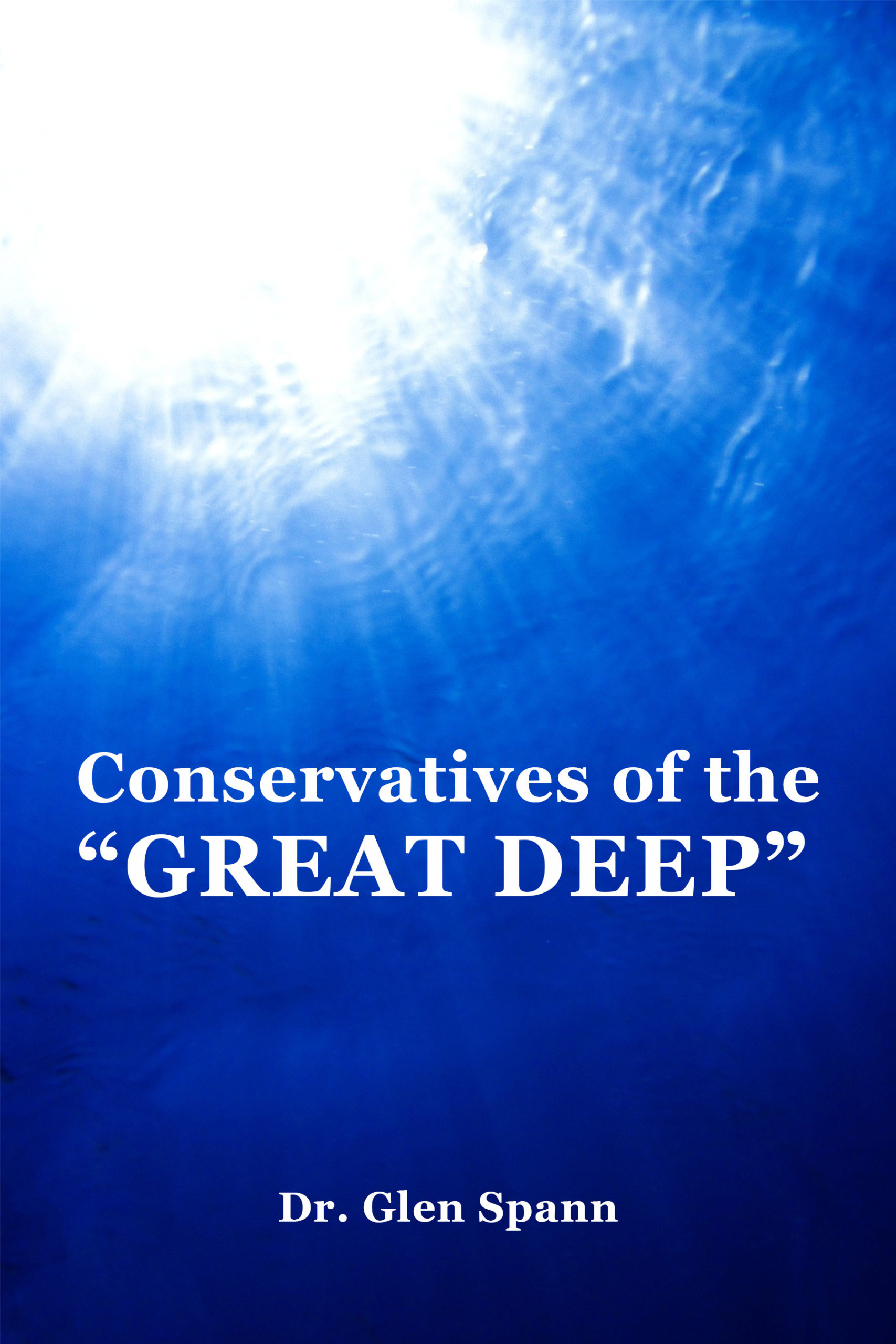History is not merely the recitation of names and dates. If we are to learn from history, it must be interpreted. Dr. Spann is a historian who was trained by the notable holiness historian Timothy L. Smith. Before beginning to chronicle the tug of war for the soul of American Methodism, Dr. Spann begins with a metaphor based on the sea. A superficial reading of history might only take into account the winds and waves on the surface. But Dr. Spann argues that we do not really get the complete picture until we go deeper. After he monitors the currents and crosscurrents which are not readily visible on the surface, he concludes that there is an underlying evangelical faith resting in the great deep. In fact, there may be a disconnect between what is happening in the spotlight and what is happening beneath the surface. It is important for everyone who is seeking to determine what to do next to be aware of what has happened in the past hundred years. What follows is an excerpt from Glen Spann’s forthcoming book, Conservatives in the “Great Deep” of the Methodist Church, 1900–1980 (Francis Asbury Press).
Ronald E. Osborn in The Spirit of American Christianity uses an “oceanic analogy” which may help explain the apparent disregard for Methodist evangelicals. Osborn compares the theologians and professors of religion to the surface waves of a sea. These waves are “constantly in movement, frequently intriguing, sometimes dazzling,” while “the winds and occasional storms” which drive them are the “contemporary schools and trends, the controversies of the day.” This “superficial portion of the ocean presents itself to the eye of the casual observed,” but below this relatively shallow surface Osborn detects a second level of religious life, the “currents and crosscurrents,” which are comparable to the Gulf Stream and other ocean currents. These “represent the major movements of Christian theology which affect the life of the churches and the preaching of the gospel for generations or a century.”
According to Osburn, it is these two “upper levels of our sea of faith which generally attract the attention of scholars and writers.” However, underneath these levels is “the great deep” which corresponds to the “faith of the people.” This “deep” heaves “with the pulsations of its own movement,” but is largely “untroubled by the waves or surface storms and relatively undisturbed by the currents, though in some ways affected by them.”
Osborn’s frank appraisal is that “the vast depth of the popular faith is a major phenomenon which both the theologians, with their intellectual sophistication, and the church historians, preoccupied with institutions and ‘decisive’ movements, tend to overlook.” Furthermore, it is his contention that in spite of theological developments and liberal emphases within twentieth-century American Protestantism, the “average American Christian” has retained a largely evangelical faith.
Osborn’s analysis is certainly applicable to the recent history of the Methodist Church. Over the past one hundred years its theological surface has taken on a pronounced liberal texture in the seminaries and schools. The professors and theologians of modern Methodism have been called “some of the most avant garde theologians . . . in all Christendom.” Moreover, on the second level, Methodism in this century has seemed to move easily in the broad current of modern liberal thought. To extend Osborn’s metaphor, we could mention that many “second level” shapers of theological opinion in the church—editors, writers, bishops, ministers—often have reflected the liberalism of the professors and theologians. However, beneath these levels still lies Osborn’s “great deep” which, as he says, “constitutes more of the sea than does the surface.”
While perhaps in some areas of the church this great deep has been affected more by liberalism than Osborn would admit, a reservoir of evangelical faith has persisted within the Methodist “deep,” faith that in its broad outlines—and even in some specifics—is largely unchanged from the faith of traditional Methodism. This evangelical faith has expressed itself in a variety of ways and to varying degrees over the past one hundred years, and though its echoes have not always sounded clearly in the “official positions” of the denomination, nevertheless traditional Christian orthodoxy has retained the loyalty of millions of Methodists in the modern era.
This [book] intends to document the continued vital presence and involvement of evangelicals within American Methodism in this century. With a denomination as large and diverse as the Methodist Church, it is probably impossible to produce exact figures or percentages representing the convictions of those within the depths of the Methodist sea. One of the formidable challenges in trying to chart such a graph is that of description: the theological options available to twentieth-century Methodists rarely have divided neatly into clear-cut categories of evangelical or liberal. Differing shades of conservative, liberal, and moderate theologies, along with the varying impact of secular ideologies and social factors, have overlapped and blended together to form the substance of the beliefs of the Methodist people. The line of demarcation between those to the left of the theological center and those to its right has not always been clearly discernible, and thus the numbers of those falling on either side at any particular time defies precise measurement.
In spite of these obstacles, however, broadly defined theological positions are distinguishable among Methodists and especially among those who self-consciously identify themselves according to fairly precise theological categories. The focus of this [book] will be upon those Methodists who usually with great clarity have described themselves doctrinally as “evangelical” and who often have given further evidence of their faith position by being at odds with the generally liberal drift of the denominational leadership.
Various evangelicals through the century have argued that, at least among the laity, theological conservatism has continued to maintain its dominance in the church. For example, as late as 1990, Methodist evangelicals cited a denominational study which indicated that over seventy percent of those in the “grass roots” of Methodism called themselves “conservative” as “proof” that most Methodists still embraced theological orthodoxy.
Admittedly, the conclusions reached by such studies depend to some extent on how the questions are asked and the nature of particular issues then ascendant in the collective consciousness of the church. Thus, the percentages and data tend to fluctuate; nevertheless, the persistent conservative self-identification of many Methodists clearly indicates that the term “mainline liberal” does not adequately represent all the denomination. I do not intend to offer conclusive proof that evangelicals have represented a majority of the membership of Methodism at any particular time within the twentieth century, although I think enough evidence exists to establish that point in the pre-1920 era if not for later periods as well. However, I will provide clear evidence that, in spite of the obviously liberal breezes and currents playing across the church since 1900, theological conservatism has continued to enjoy a significant place in the “great deep” of the church. While sociological factors and trends have certainly modified the faith expressions of many conservative Methodists, large numbers of Methodist evangelicals in the 1920s, 1940s, and 1970s have affirmed essentially the same theology as their nineteenth-century predecessors.

